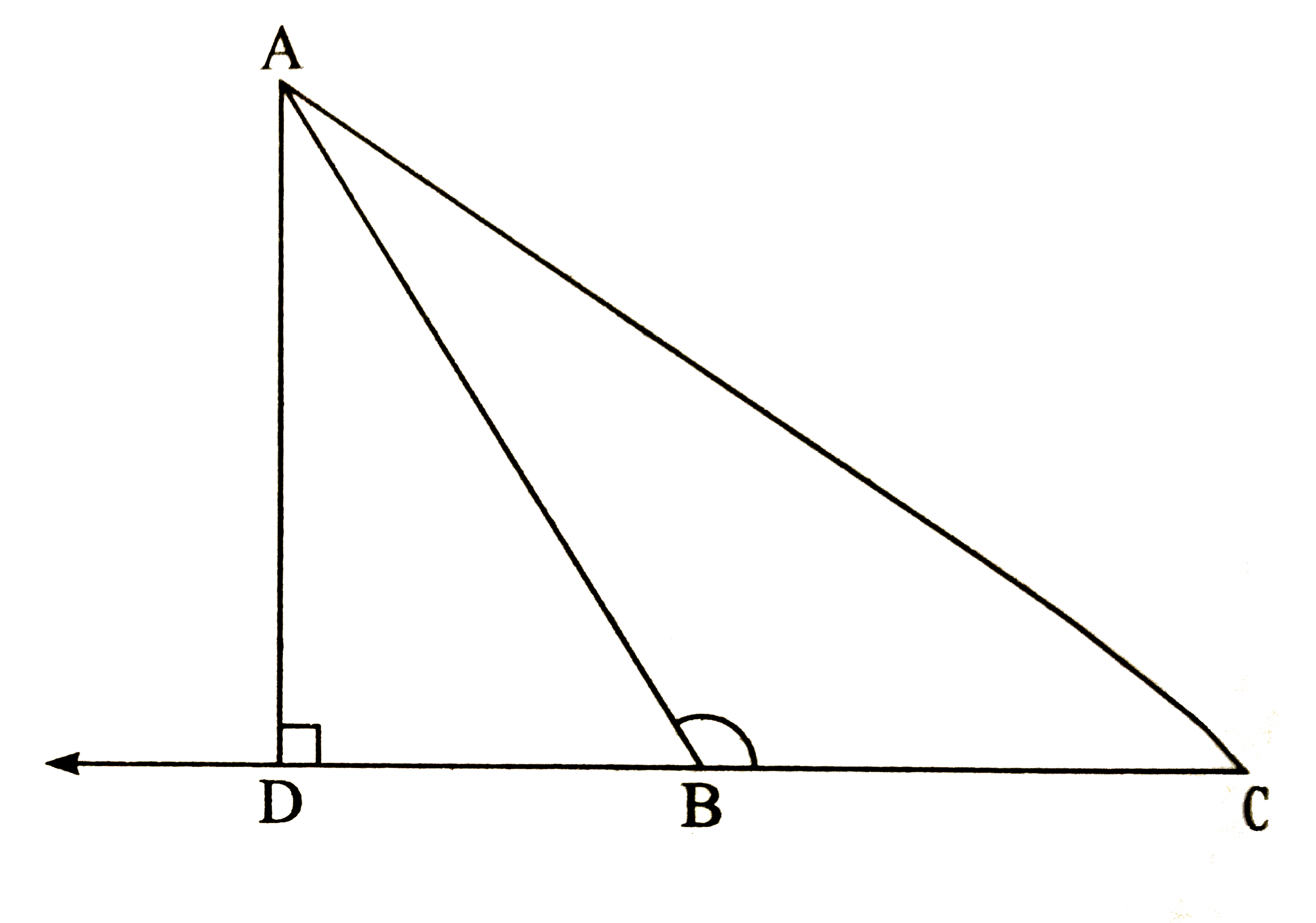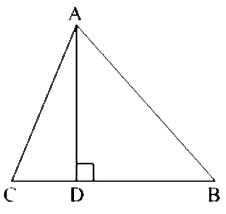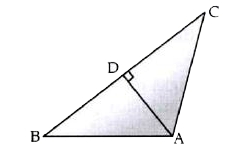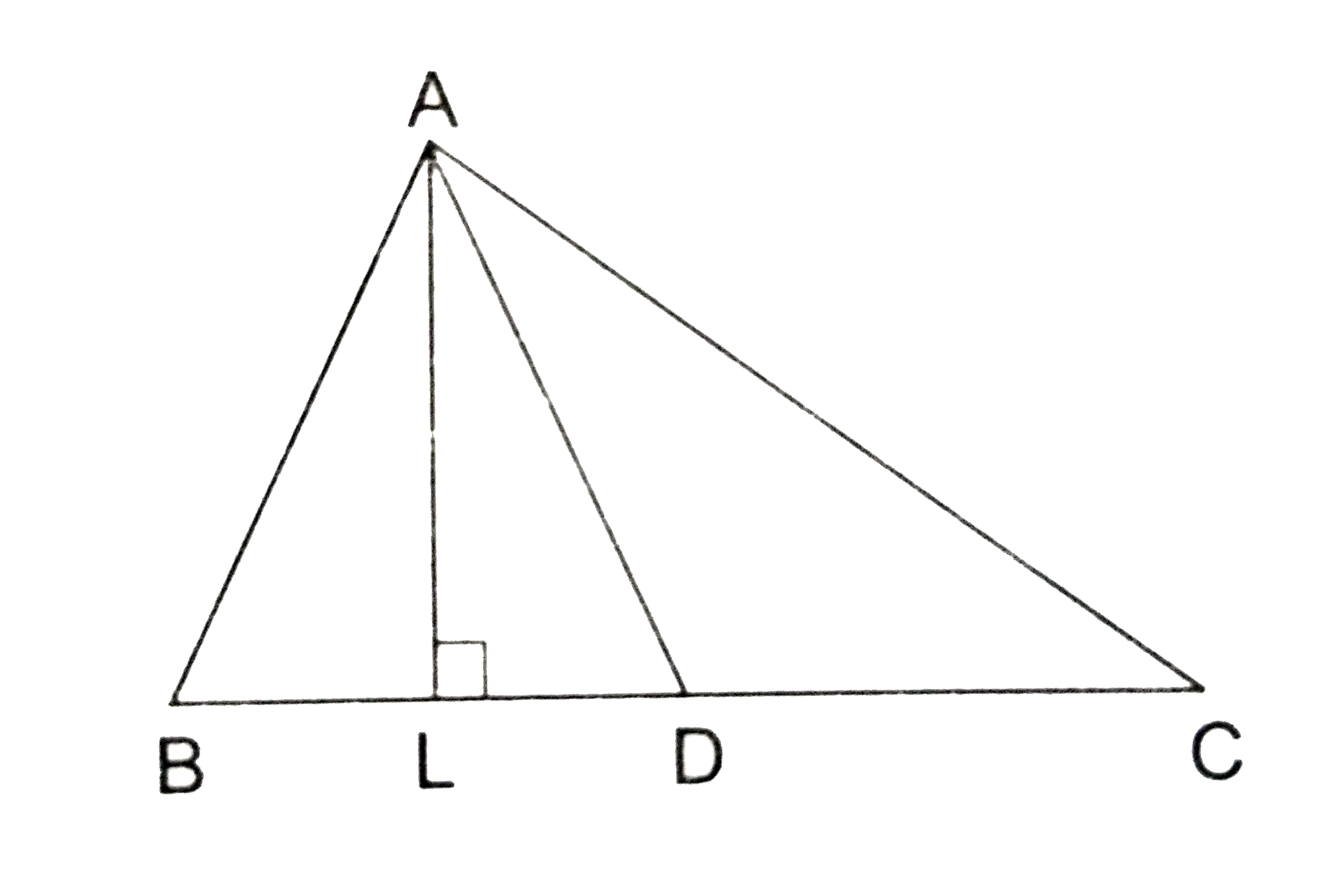In ΔABC,AX⊥BC and Y is middle point of BC. Then prove that ,
AC2=AY2+BC24+BC.XY
To prove that AC2=AY2+BC24+BC⋅XY in triangle ABC where AX is perpendicular to BC and Y is the midpoint of BC, we can follow these steps:
Step 1: Identify the triangles
We have triangle ABC with AX perpendicular to BC. Let Y be the midpoint of BC.
Step 2: Apply the Pythagorean theorem in triangle AXY
In triangle AXY, we can apply the Pythagorean theorem:
AY2=AX2+XY2(1)
Step 3: Apply the Pythagorean theorem in triangle ACX
In triangle ACX, we also apply the Pythagorean theorem:
AC2=AX2+CX2(2)
Step 4: Subtract equation (1) from equation (2)
Now, we subtract equation (1) from equation (2):
AC2−AY2=CX2−XY2
Step 5: Express CX in terms of CY and XY
Since Y is the midpoint of BC, we can express CX as:
CX=CY+XY
Step 6: Substitute CX into the equation
Substituting CX into our equation gives:
AC2−AY2=(CY+XY)2−XY2
Step 7: Expand the equation
Expanding the right side:
(CY+XY)2=CY2+2CY⋅XY+XY2
Thus,
AC2−AY2=CY2+2CY⋅XY+XY2−XY2
This simplifies to:
AC2−AY2=CY2+2CY⋅XY
Step 8: Substitute CY in terms of BC
Since Y is the midpoint of BC:
CY=BC2
Substituting this into the equation gives:
AC2−AY2=(BC2)2+2⋅BC2⋅XY
Step 9: Simplify the equation
This simplifies to:
AC2−AY2=BC24+BC⋅XY
Step 10: Rearranging the equation
Rearranging gives us the final result:
AC2=AY2+BC24+BC⋅XY
Conclusion
We have proved that:
AC2=AY2+BC24+BC⋅XY
We have triangle ABC with AX perpendicular to BC. Let Y be the midpoint of BC.
In triangle AXY, we can apply the Pythagorean theorem:
AY2=AX2+XY2(1)
In triangle ACX, we also apply the Pythagorean theorem:
AC2=AX2+CX2(2)
Now, we subtract equation (1) from equation (2):
AC2−AY2=CX2−XY2
Since Y is the midpoint of BC, we can express CX as:
CX=CY+XY
Substituting CX into our equation gives:
AC2−AY2=(CY+XY)2−XY2
Expanding the right side:
(CY+XY)2=CY2+2CY⋅XY+XY2
Thus,
AC2−AY2=CY2+2CY⋅XY+XY2−XY2
This simplifies to:
AC2−AY2=CY2+2CY⋅XY
Since Y is the midpoint of BC:
CY=BC2
Substituting this into the equation gives:
AC2−AY2=(BC2)2+2⋅BC2⋅XY
This simplifies to:
AC2−AY2=BC24+BC⋅XY
Rearranging gives us the final result:
AC2=AY2+BC24+BC⋅XY
We have proved that:
AC2=AY2+BC24+BC⋅XY
Topper's Solved these Questions
- DIKSHA QUESTIONS BOOK - OSWAL PUBLICATIONCHAPTER - DIKSHA QUESTIONS EXERCISE - Unit -IV: Geometry (Triangles) (Multiple Choice Questions)
8 Videos
- DIKSHA QUESTIONS BOOK - OSWAL PUBLICATIONCHAPTER - DIKSHA QUESTIONS EXERCISE - Unit -IV: Geometry (Triangles) (Very Short Answer type Questions )
17 Videos
- DIKSHA QUESTIONS BOOK - OSWAL PUBLICATIONCHAPTER - DIKSHA QUESTIONS EXERCISE - Unit -III: Coordinate Geometry (Coordinate Geometry ) (Very Short Answer Type Questions )
13 Videos
- COORDINATE GEOMETRYBOOK - OSWAL PUBLICATIONCHAPTER - COORDINATE GEOMETRYEXERCISE - SELF ASSESSMENT
20 Videos
- INTRODUCTION TO TRIGONOMETRY BOOK - OSWAL PUBLICATIONCHAPTER - INTRODUCTION TO TRIGONOMETRY EXERCISE - Self - Assessment
15 Videos
Similar Questions
In ΔABC,AX⊥BC and Y is middle point of BC. Then prove that ,
AB2=AY2+BC24−BC.XY
View SolutionIn a right ABC right-angled at C , if D is the mid-point of BC , prove that BC2=4 (AD2−AC2) .
View SolutionIn a ΔABC,∠B is an acute-angle and AD⊥BC
Prove that :
(i) AC2=AB2+BC2−2BC×BD
(ii) AB2+CD2=AC2+BD2
View SolutionIn obtuse angled ΔABC, ∠B>90∘. If seg Ad⊥ ray CB and D−B−C, then prove that AC2=AB2+BC2+2BC⋅DB.

View SolutionIn ΔABC, seg AD⊥ seg BCDB=3CD.
Prove that : 2AB2=2AC2+BC2

View SolutionIn a triangle ABC, AC>AB , D is the mid-point of BC and AE⊥BC . Prove that: (i) AB2=AD2−BCxDE+14BC2
View SolutionIn the given figure if AD ⊥ BC prove that AB2+CD2=BD2+AC2

View SolutionIn a triangle ABC, AC>AB , D is the mid-point of BC and AE⊥BC . Prove that: (i) AB2=AD2−BCDE+14BC2 (ii) AB2+AC2=2 AD2+12BC2
View SolutionIn aΔABC,AD is a median and AL⊥BC.
Prove that
(a) AC2=AD2+BC⋅DL+(BC2)2
(b) AB2=AD2−BC⋅DL+(BC2)2
(c) AC2+AB2=2AD2=2AD2+12BC2

View SolutionIn ΔABC, if M is the midpiont of BC and seg AM ⊥ seg BC, then prove that prove that AB2+AC2=2AM2+2BM2.
View Solution
